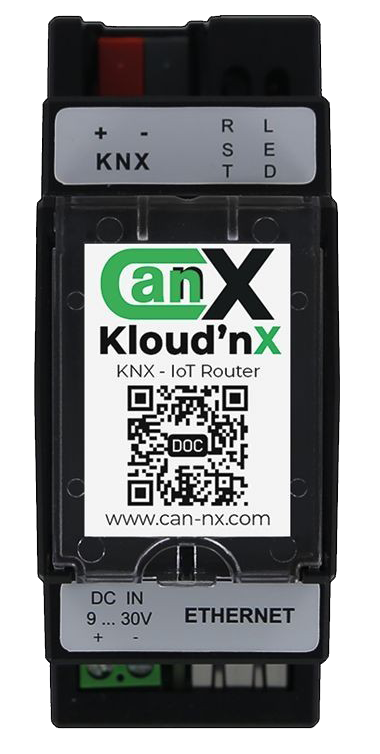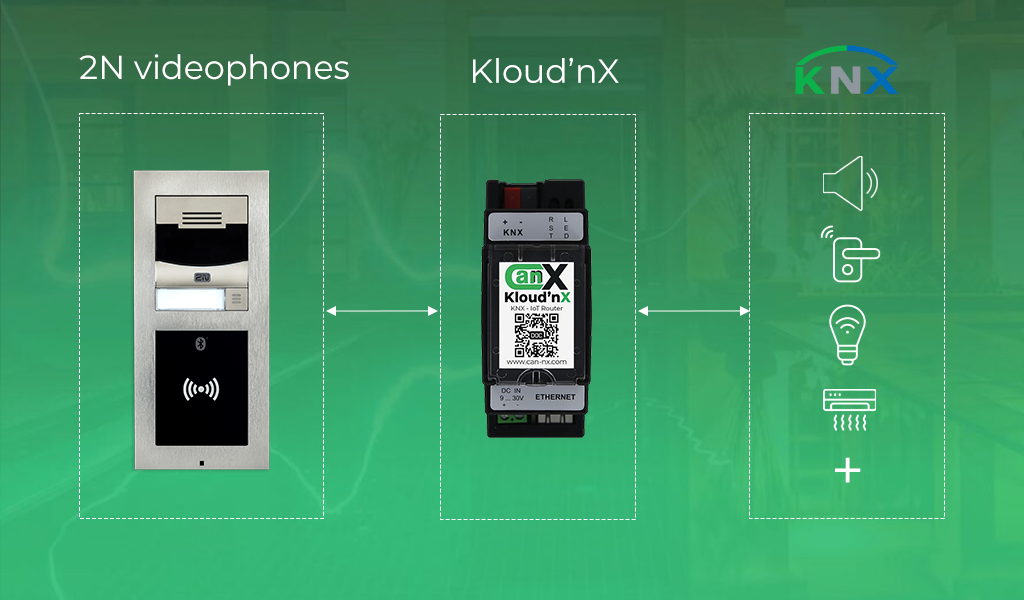
The Link’nX license, integrated into Kloud’nX, communicates seamlessly with 2N devices, enabling both command execution and event monitoring.
Add the Link’nX license to your Kloud’nX account to enable interaction with 2N devices.
2N device configuration: Configure your 2N device correctly by enabling HTTP API services, specifically the “Switch API” for sending commands and the “Log API” for receiving events. Ensure that compatible authentication protocols are selected (e.g. Basic, Digest).
Device declaration: Declare your 2N device in the Kloud’nX interface, providing its name, IP address, HTTP API username and password. You can also import the 2N device’s XML configuration file to pre-fill fields and retrieve user lists.
Create actions: Define actions in Kloud’nX to send commands to your 2N device, such as opening or locking a door.
Create triggers: Set up triggers in Kloud’nX to react to events on your 2N device, such as code entry or motion detection.
2N device control: Interact with 2N equipment to send commands such as opening a door or locking a gate.
Event monitoring: Receive and react to various events from your 2N device, including:
Switch PLC control: Send commands to control the switches on your 2N device.
Event logging API: Enables you to retrieve events that occur on the 2N device (code entry, call, door opening, etc.).
Device status changes: Signals device status changes (generated once after device start-up).
Motion detected: signals the detection of motion by a camera (available for models equipped with a camera and if the function is activated).
Noise detected: Signals an increase in noise level detected by a microphone (if enabled).
Entered code: Indicates code entry via numeric keypad (for devices with numeric keypad). Optional parameters include specific code correspondence, code validity (valid/invalid) and user ID.
Captured card: Signals that an RFID card has been tapped/placed on the card reader (for devices with RFID card reader). Optional parameters include card validity (valid/invalid) and user ID.
Modified logic input and modified logic output: Signals a change of state of the logic input.
Switch status change: Indicates a switch status change (active/inactive).
Call status change: Signals the establishment/change/end of the active call status (Connection, Call, Connected, Terminated).
Self-protection switch activated: Signals activation of the self-protection switch / opening of the device cover.
Unauthorized door opening: Indicates unauthorized door opening.
Door open too long: Indicates that the door has been open too long, or that it has not closed within the set time.
Authenticated user : Signals user authentication and door opening, allowing identification by name or user ID.
Card held (4 seconds): Indicates that an RFID card has been tapped/placed and held on the reader for more than 4 seconds.
Silent alarm: Signals the activation of a silent alarm.
REX button activated (push-button): Indicates activation of the REX (Request to EXit) button.
Restricted access: Signals user rejection.
Biometric fingerprint identification : Indicates that a finger has been placed on the biometric reader.
Mobile key seized (bluetooth): Signals user authentication at Bluetooth reader level.
DTMF (dual-tone multi-frequency) code entered: Indicates a DTMF (dual-tone multi-frequency) code on the call.
Door status change: Indicates a change in door status (open/closed).
User rejected: Signals the rejection of user authentication, with various reasons for rejection available.

You can purchase the license at www.can-nx.shop. Once purchased, log in to your Kloud’nX account, access the “Serial key” section to retrieve your key, then add it to your Kloud’nX project via the “Add extension” button.
You can create various actions, including: “Open”, “Close”, “Lock”, “Unlock”, and “Hold door open”.